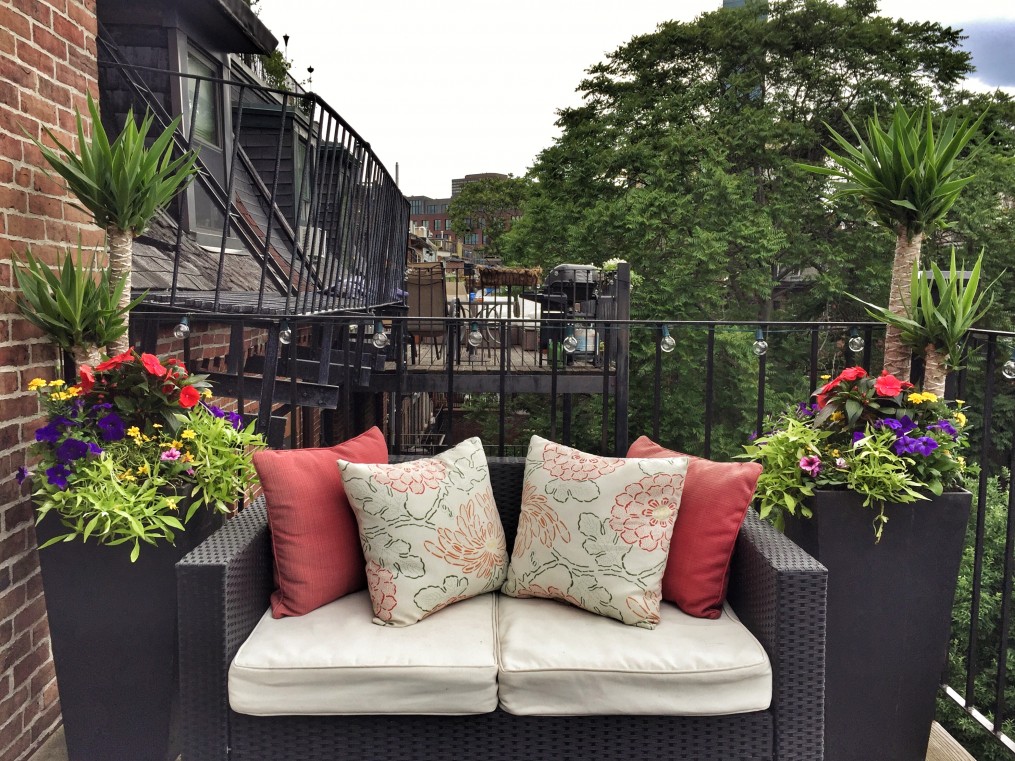Designing our balcony and rooftop flower gardens each summer is one of my favorite activities. While it’s time consuming (and expensive!) to plant and maintain, there is nothing better than looking out of your window and being greeted with bright and beautiful blooms!
Since we live in a penthouse in the middle of the city, our garden is limited to the creative use of planters. Let’s just say, the art of arranging is key! It’s imperative to research and understand which flowers will work with the planting conditions at your home. For example, our balcony receives beautiful morning light, but turns to shade in the afternoon, while our rooftop has full sun throughout the day. When we shop for flowers, we read all of the information tags to ensure that what we buy will flourish in our garden. There is nothing worse than spending significant time and money on blooms that end up wilting away.
If you’re thinking of planting an urban garden this summer, I’ve rounded up a few tricks of the trade on how to select and arrange flowers and plants in a city space. In full disclosure, my father has a master green thumb and has been slowly teaching me and my husband how to achieve an eye-catching garden, so a shout-out to him for his help and guidance.
Happy gardening!
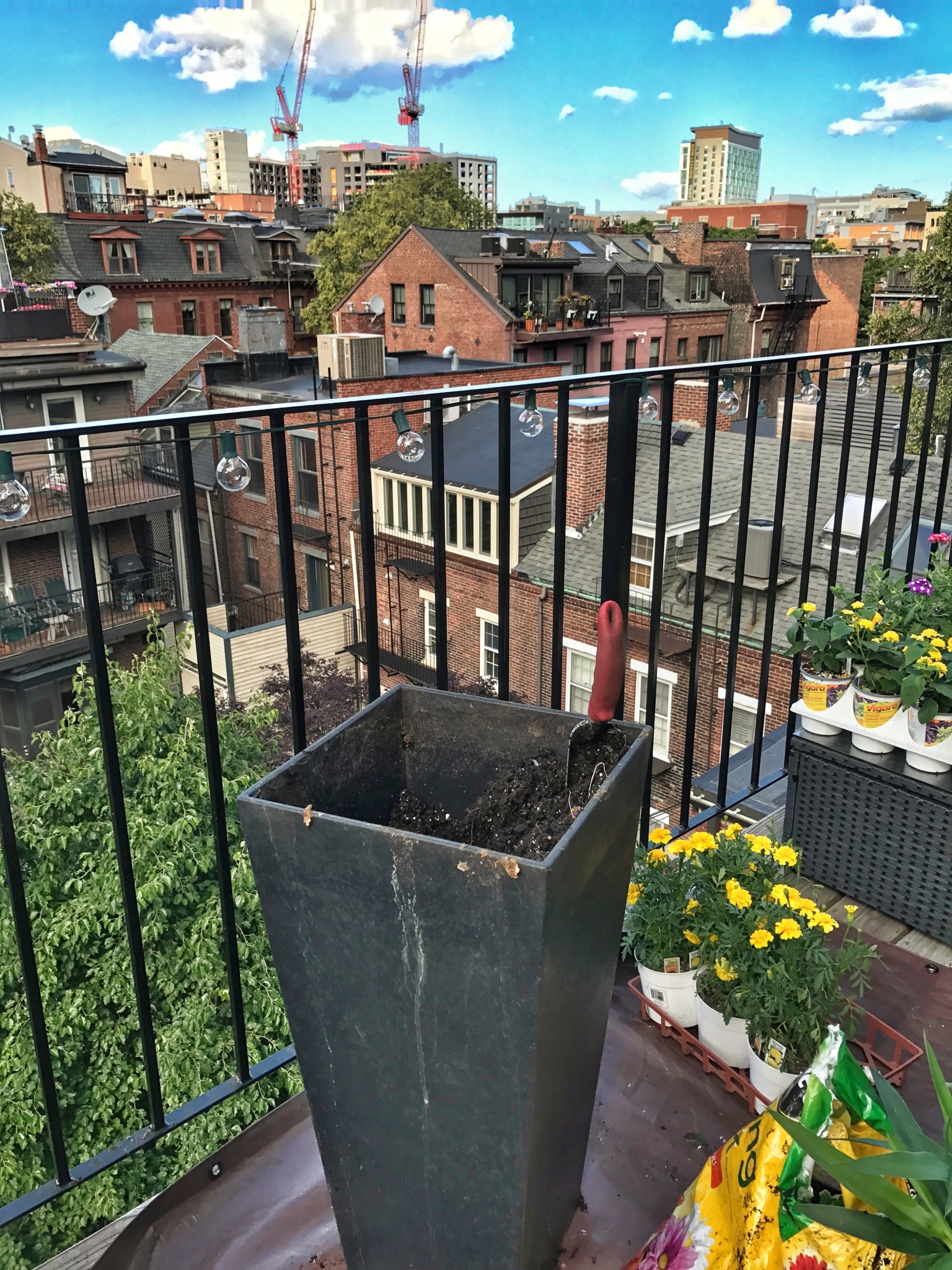
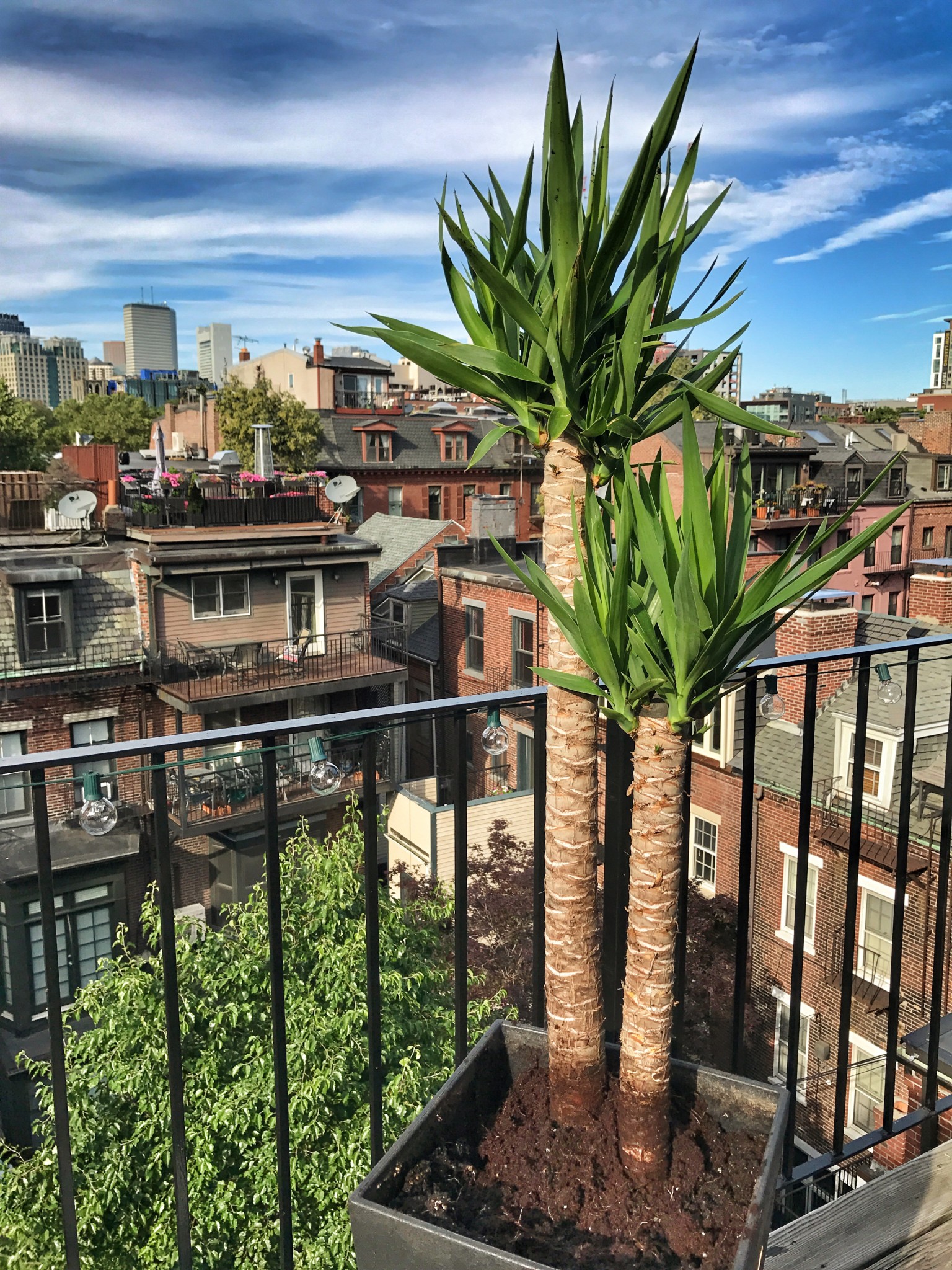
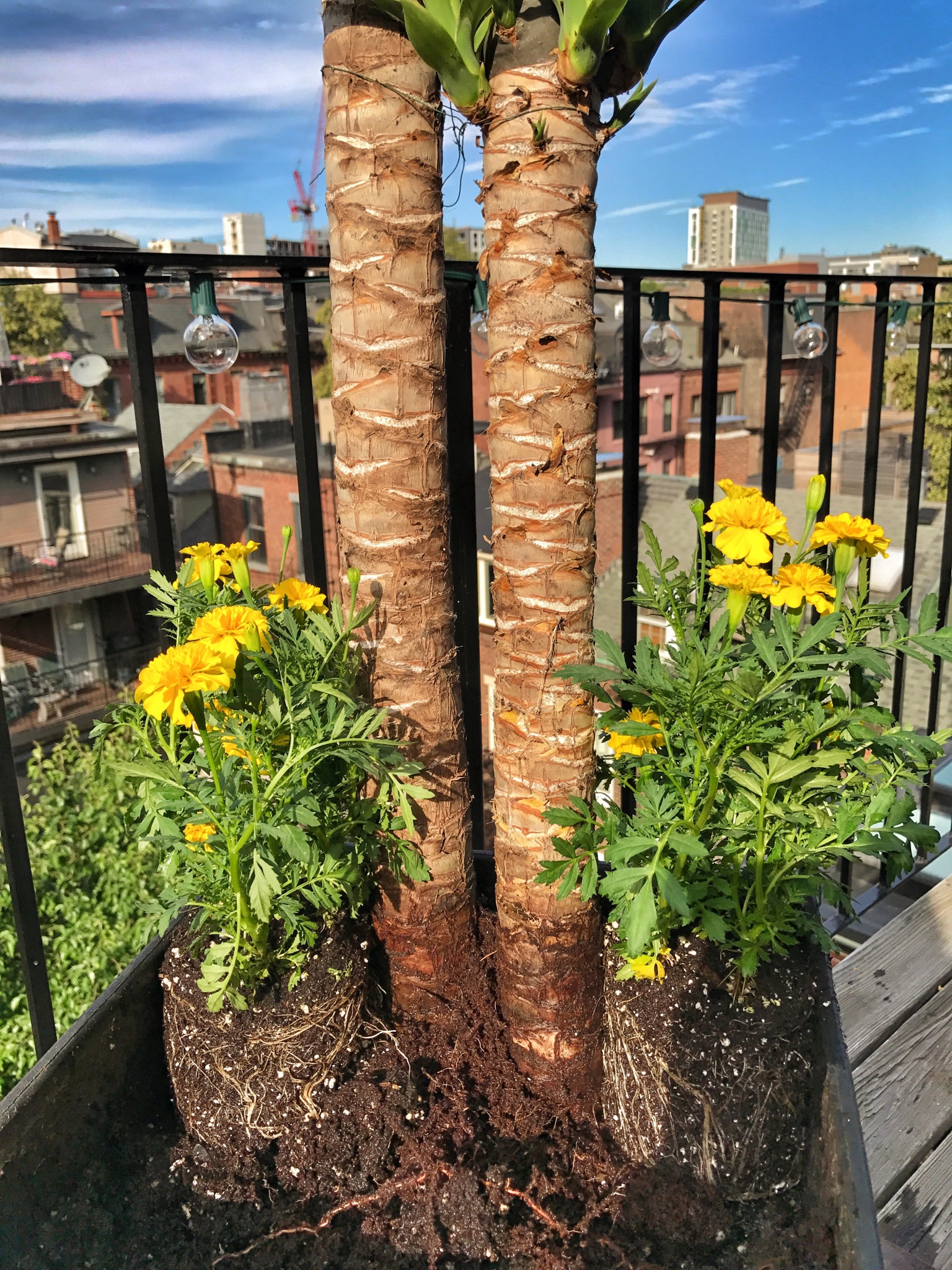
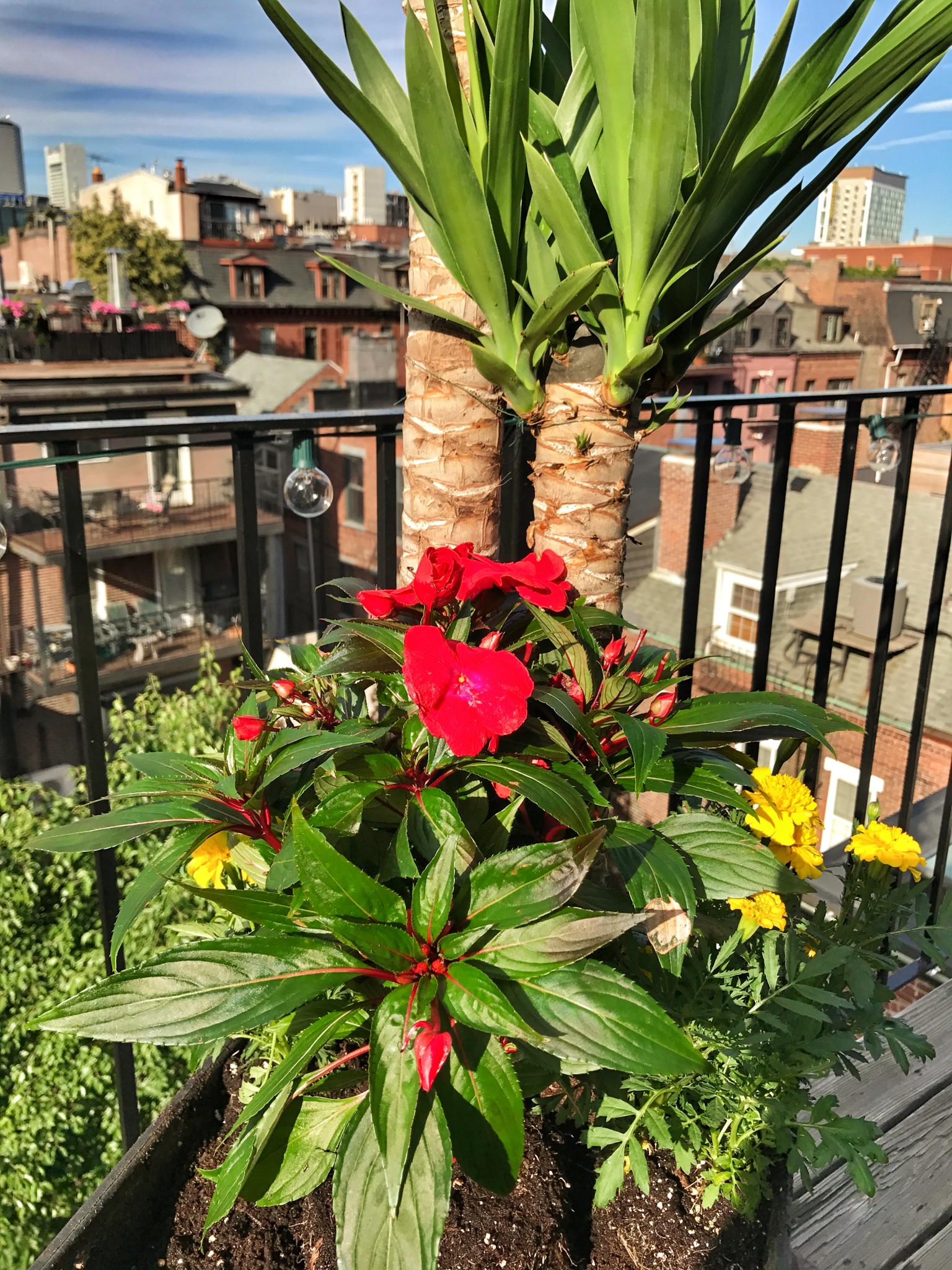
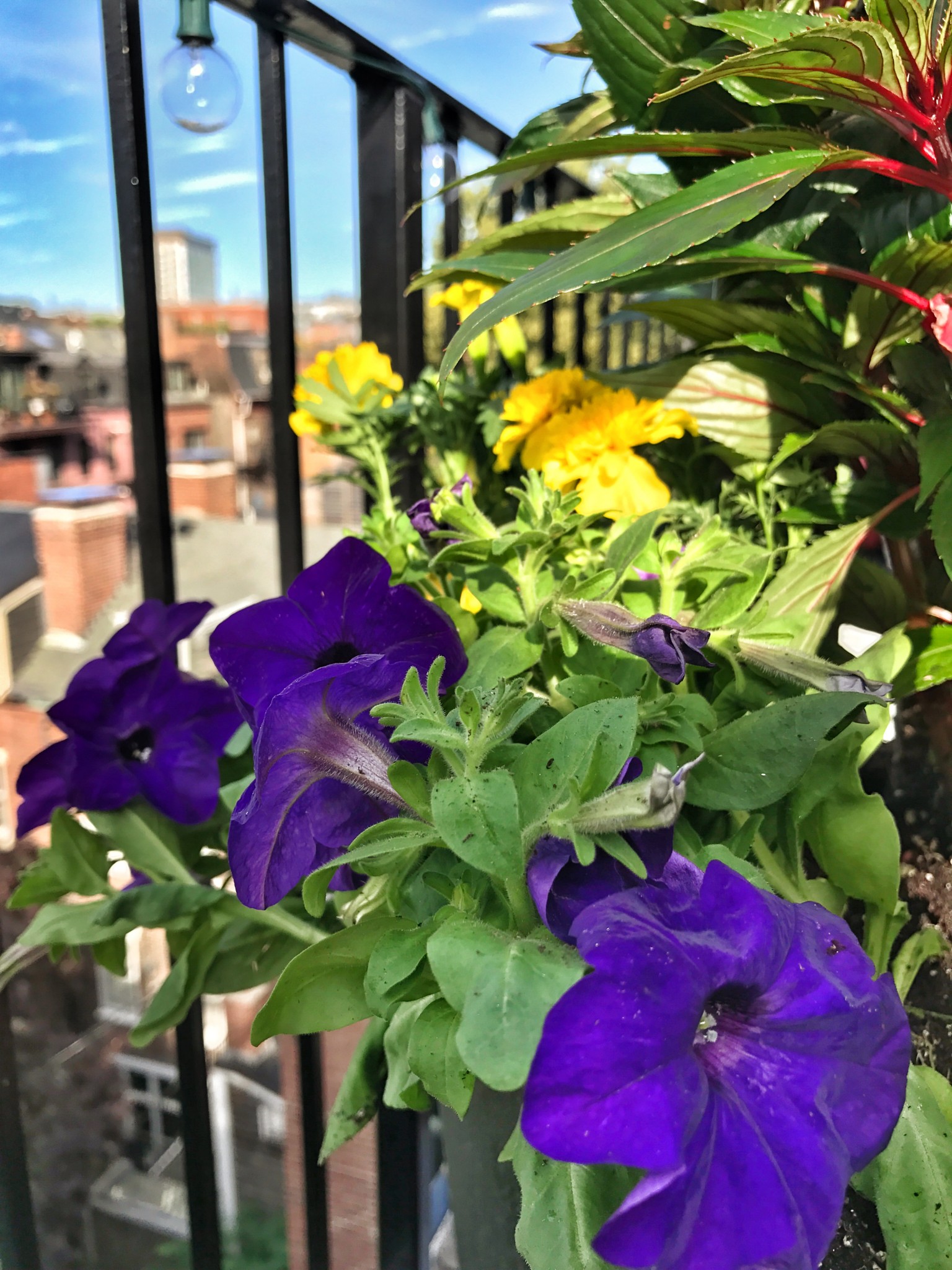
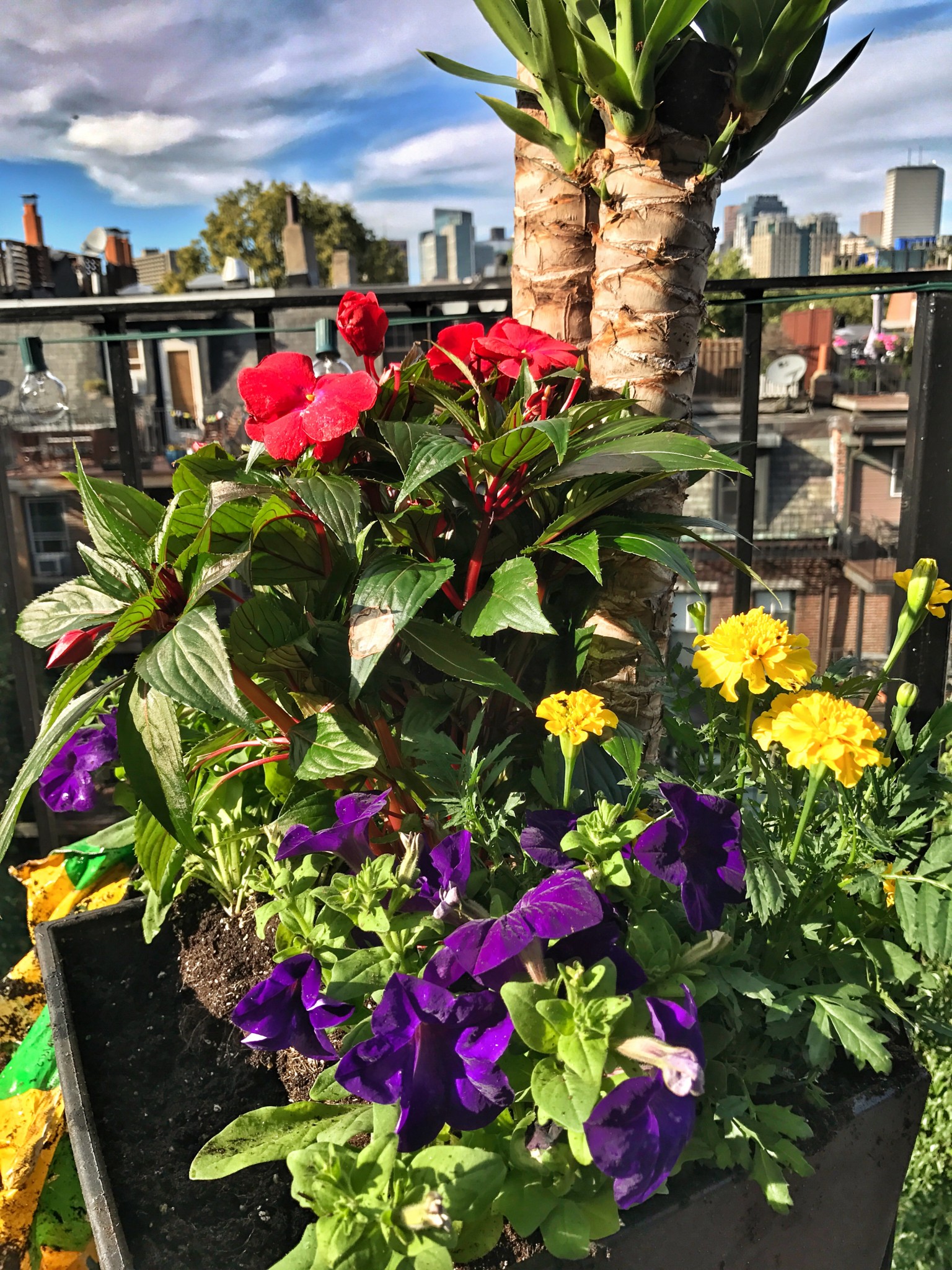
The A-Lyst for Urban Gardening on a City Balcony
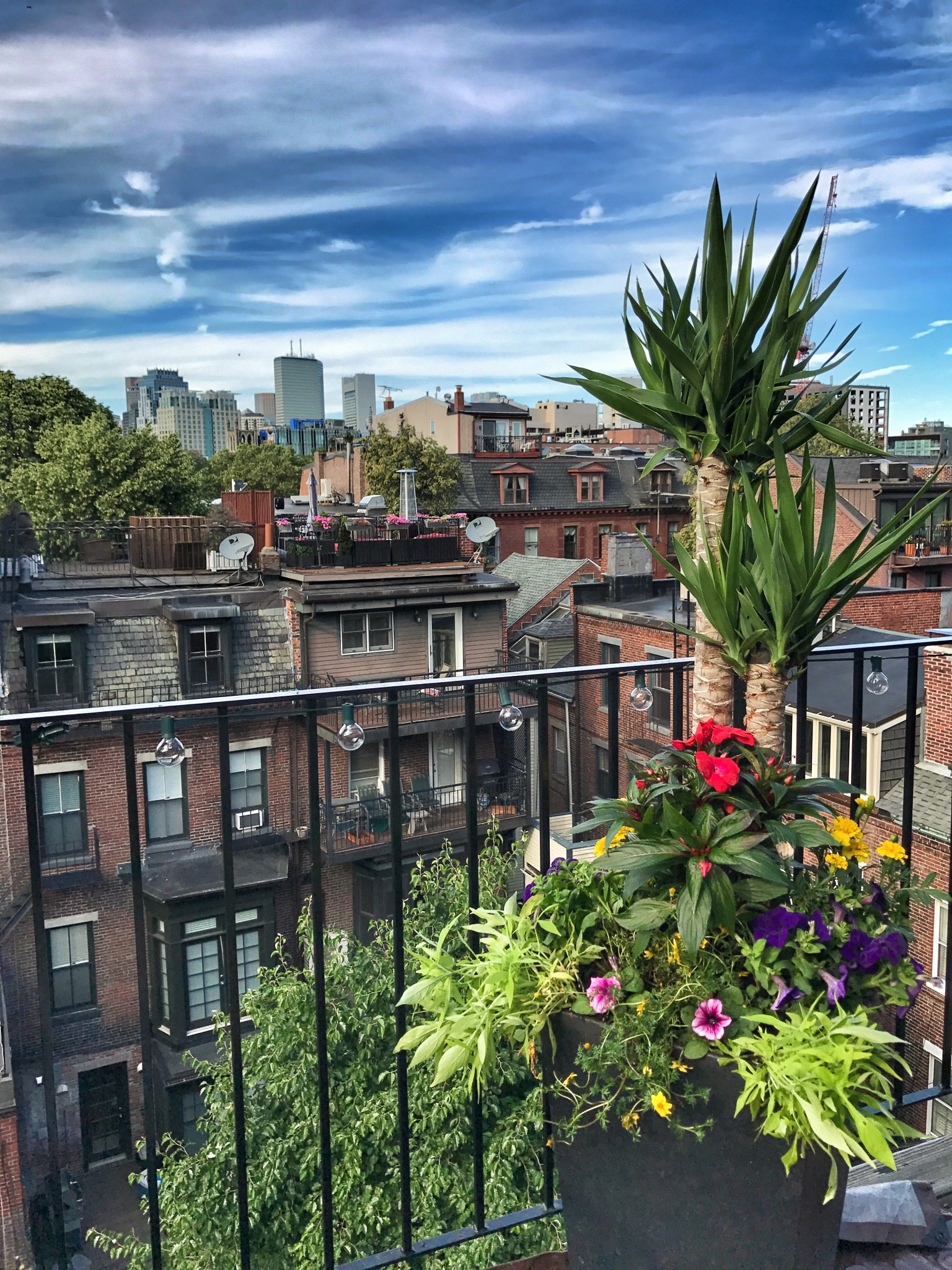
Find Your Anchor
When working with planters, it’s important to establish an anchor or focal point. Traditionally, this flower or plant is the tallest in the box and its job is to grab your attention. This year, we opted for Yucca Cane as the anchor in our planters. Personally, I love Yucca because of how tropical they look; they make me feel transported to the sandy beach of some far off island! In years past, we have planted daisy trees, hibisicus trees, and evergreen as our anchors, all of which work well to add height to our arrangements. Your anchor should be the first thing you plant.
Create Symmetry
Eyes love symmetry, so give them what they want! When arranging our planters, we incorporate several layers of symmetry, each using a different color and type of flower. This year, we chose Marigolds (I love the bright, happy yellow color, but beware, you have to deadhead them at least once a week to encourage new growth!), Emerald Lace, Petunias, and a cheerful little plant called Goldilocks Rocks. Typically, we begin the symmetric arranging in the back of the planter next to the anchor plant and then move our way towards the front.
Incorporate Different Textures
This is my favorite part of buying and arranging flowers! Let’s just say, I never have a hard time choosing an array of different textures because there are SO many different types of flowers. Look for different bud shapes, leaf textures, and of course, sizes. When arranging, always plant your flowers in the order of largest to smallest.
Vary the Height
To make your planters even more visually appealing, incorporate several different heights of flowers/plants. This allows you to fit more flowers and create a cascading effect. Impatiens are one of my favorite flowers because they come in a multitude of colors and are very hardy. Below the Yucca, we planted one large red cluster of impatiens as a way to add another layer of height.
Play with Color
I think an urban garden should be as colorful as possible! I love to incorporate bright reds, pinks, yellows, purples, and even a few white blooms in order to create a bright, visually exciting arrangement. One tip I’ve learned is to conceptualize your arrangement before even leaving the garden store. This helps to narrow down which flowers and hues will work with my desired design scheme. Don’t be afraid to buy two of the same flower, but in different colors, as this will also help to create interest.
Take Note of Habit
The most visually pleasing flower planters have blooms with varying growing habits, meaning some flowers will hang, while others will mound and climb. Ideally, you will want to try and incorporate several different habits into your arrangement so that the flowers don’t grow on top of one another, but instead, with one each other. In our summer planters, the emerald lace, goldilocks rocks, and petunias will eventually begin to cascade downwards and create additional dimension. In years past, we have had petunias that don’t end up cascading down. A tip to make sure plants go where you want them to go is to create a full arrangement, as the more crowded the plants are, the more encouraged they will be to grow elsewhere.
The A-Lyst is a Boston-based lifestyle blog curating the very best of style, beauty, food, and travel.

